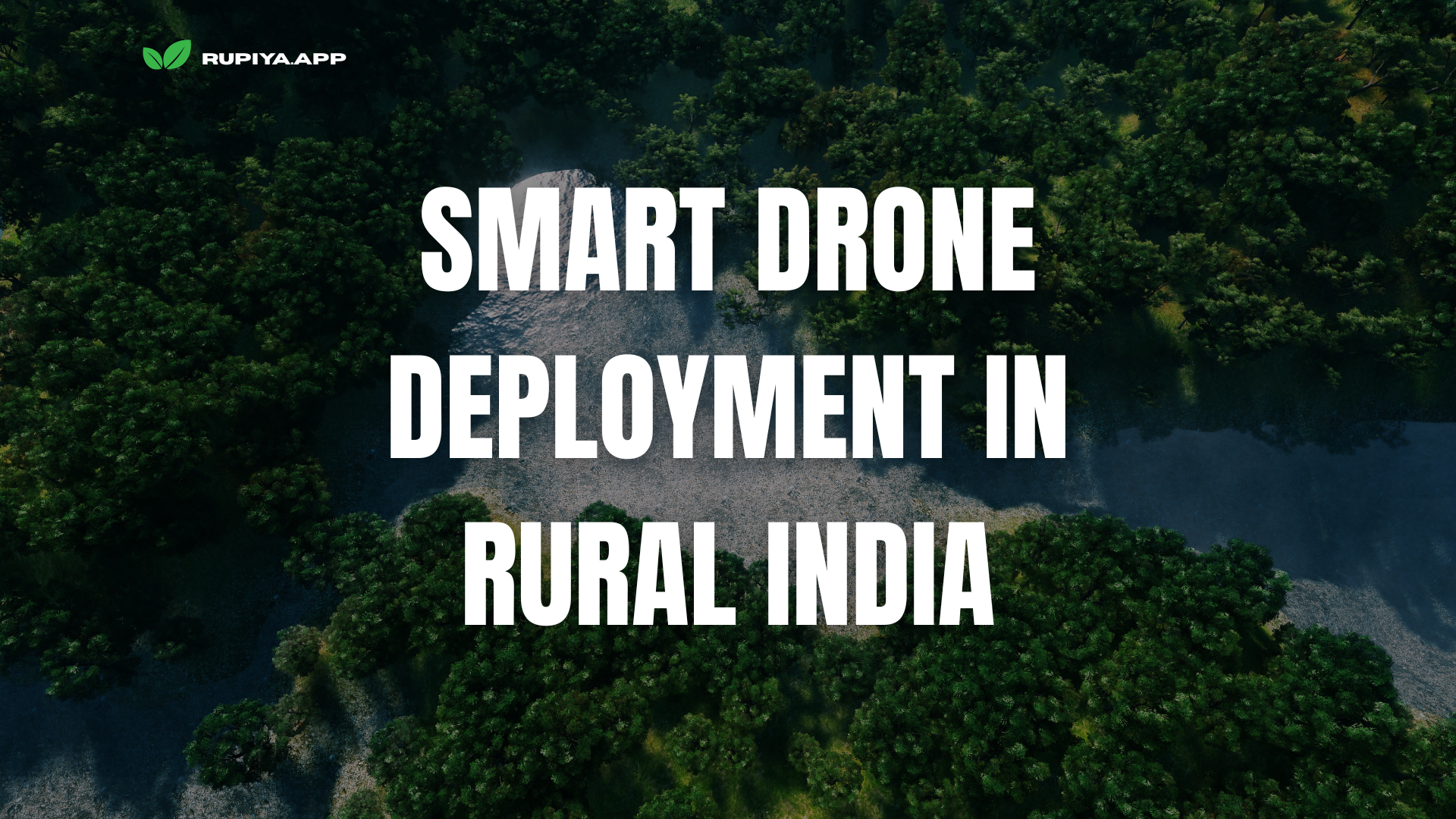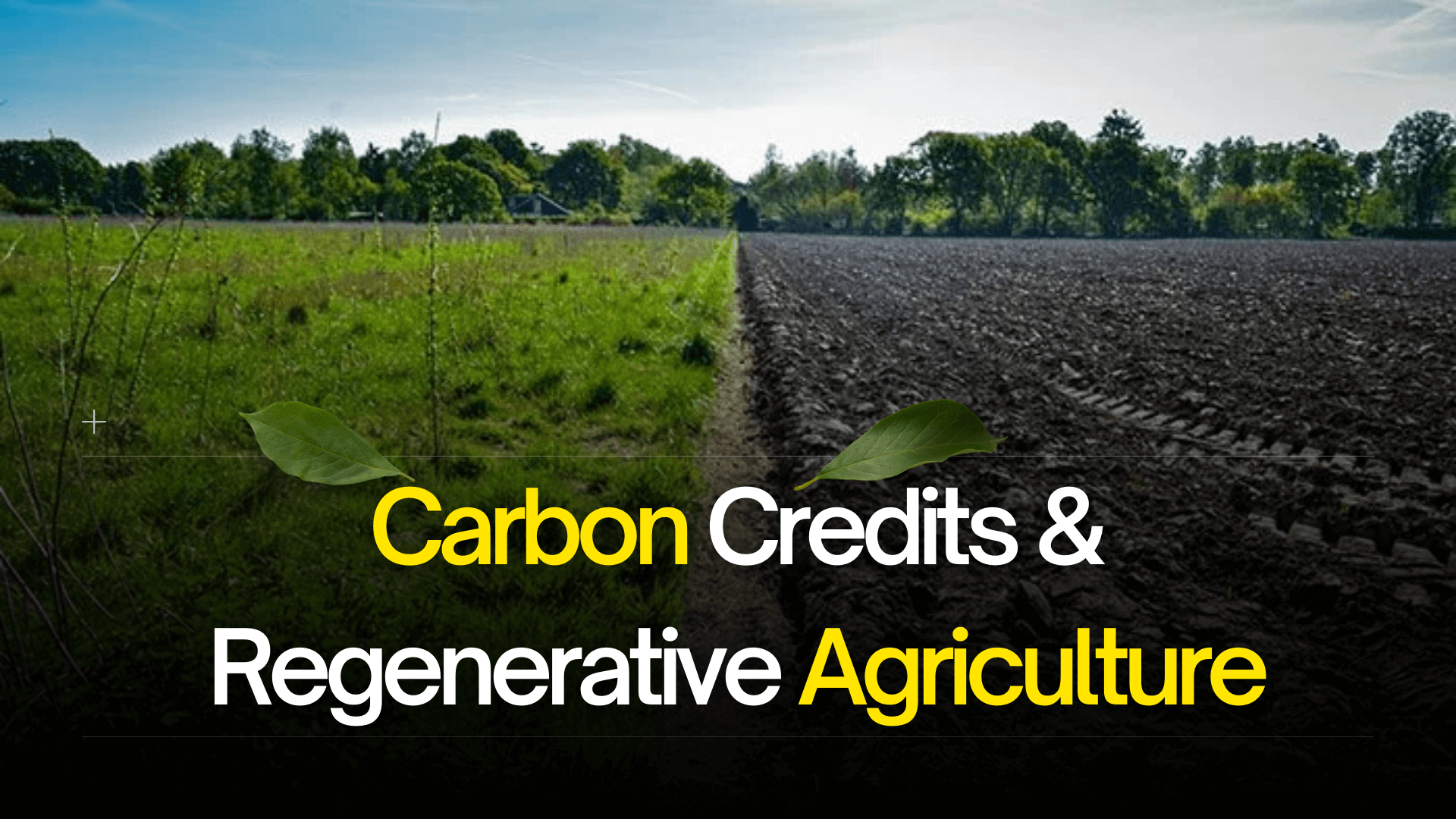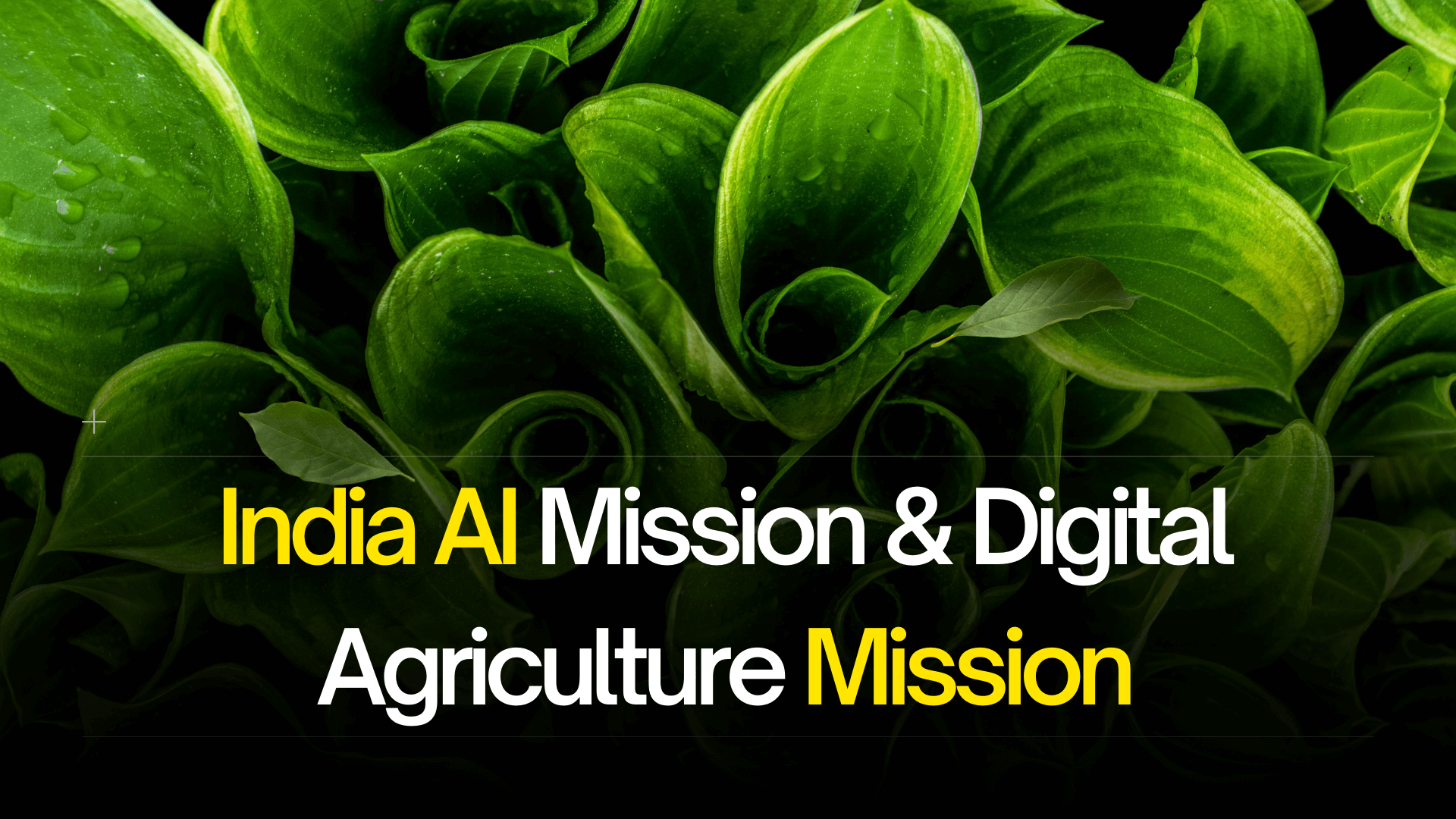Regenerative Farming & Carbon Credits in India

Understanding Regenerative Farming and Its Impact
If you’re a farmer—or someone who cares about where our food comes from—you’ve probably heard the buzz around regenerative agriculture. But this isn’t just another trend. It’s a way of farming that puts life back into the soil, boosts biodiversity, and helps build a more resilient future for agriculture.
Unlike conventional methods that often wear out the land over time, regenerative practices like cover cropping, no-till farming, and crop rotation improve the soil. They help it hold more water, cycle nutrients better, and even pull carbon out of the atmosphere. That means healthier farms, better yields, and fewer synthetic inputs.
What’s exciting is that these practices don’t just benefit the environment—they benefit you. Whether it’s through lower input costs, better crop performance, or even new income from carbon credits, regenerative farming is opening doors to a more sustainable and profitable way forward.
Ready to Transform Your Farm and Earn from Sustainability?
Looking to boost soil health, cut costs, or earn more?
rupiya.app guides you every step—from setup to income.
How Regenerative Farming Helps Carbon Sequestration
1. Soil Health Improvement
Regenerative practices like cover cropping, reduced tillage, and crop rotation enrich soil organic matter, boost microbial activity, and enhance water retention. Healthy soils act like sponges for carbon, storing it more efficiently and for longer periods. This not only pulls carbon out of the atmosphere but also makes the land more productive and resilient over time.Regenerative practices like cover cropping, reduced tillage, and crop rotation enrich soil organic matter, boost microbial activity, and enhance water retention. Healthy soils act like sponges for carbon, storing it more efficiently and for longer periods. This not only pulls carbon out of the atmosphere but also makes the land more productive and resilient over time.
2. Reduction in Synthetic Fertilizers and Emissions
By improving soil fertility naturally, regenerative farming reduces the need for chemical fertilizers, which are energy-intensive to produce and emit nitrous oxide—a potent greenhouse gas. Less dependence on synthetic inputs means fewer emissions both on and off the farm, making the entire agricultural process more climate-friendly.

How Farmers Can Earn Carbon Credits
Farmers and landowners can tap into the carbon credit market by adopting agricultural practices that reduce emissions or increase carbon storage.
There are several ways to do this:
Start by improving soil health—add biomass like mulch, use conservation or no-till methods, and plant cover crops during the off-season. These steps help enrich the soil, reduce water loss, and boost nutrient cycling. Upgrading irrigation systems to reuse runoff water also helps optimize water use and reduce waste.
Managing nutrients more efficiently is another key step. Using fewer chemical fertilizers and pesticides not only keeps the soil healthier but also cuts down on greenhouse gas emissions. Sustainable land use—like restoring degraded land, rotating crops, or turning open fields into grasslands or forests—helps keep the soil rich and ecosystems balanced.
Planting trees or encouraging natural forest regrowth can further support carbon sequestration, capturing CO₂ in vegetation and soil. By switching to lower-carbon fuels and improving manure management, farms can significantly reduce their carbon footprint.
All these efforts can add up to measurable climate benefits and unlock new income through carbon credits.
Case Studies & Real-Life Examples
Success Stories of Indian Farmers
| Title | State(s) | Crop(s)/Focus Areas |
|---|---|---|
| A Success Story of an AP Farmer | Andhra Pradesh | Rice, Mango, Mosambi |
| Success Stories of Papaya Farmers | Maharashtra (Sholapur), West Bengal (Jalpaiguri) | Papaya |
| Cultivation of Medicinal Plants | West Bengal, Maharashtra | Aloe Vera, Drumstick |
| National Agriculture Related Policies – Success Story of a U.P. Farmer | Uttar Pradesh | Rice, Wheat |
| Farming System Approach to Improve IUE, Employment and Income in Eastern India | Assam, Bihar, Odisha, West Bengal | Rice, Maize, Rice Bean, Coconut, Ginger, Turmeric, Pineapple, Banana, Papaya, Brinjal, Okra, Potato, Tomato, Floriculture, Fishery, Poultry, Duckery, Mushroom, Apiary, Biogas |
| High Density Planting: Success Stories of Banana Farmers | Tamil Nadu | Banana |
| System of Rice Intensification – Success Stories of Farmers | Andhra Pradesh, Tamil Nadu | Rice |
| Poverty Alleviation Through Vegetable Farming – An Experience of HP Farmers | Himachal Pradesh | Cabbage, Cauliflower |
| Fertigation in High Tech Agriculture – A Success Story of A Lady Farmer | Maharashtra | Capsicum |
| Landmarks in Agriculture and Fertiliser in India – The Success Story of an Uttarakhand Farmer | Uttarakhand | Sugarcane |
| Revolution in Mango Production – Success Stories of Some Farmers | Various States | Mango |
The future of sustainable farming and its financial benefits
Key Agricultural Initiatives in Union Budget 2025, Empowering Farmers for a Sustainable Future
Sustainable farming is not just an environmental imperative—it’s a smart economic strategy for India’s future. By addressing the financial, educational, and infrastructure gaps faced by farmers, the government can unlock long-term profitability and inclusive growth. Embracing global best practices, improving policy execution, and focusing on cost savings and higher incomes are key to this transformation. Source
The Union Budget 2025 offers a chance to plant the seeds of meaningful change. It’s more than a fiscal plan, it’s a roadmap for agricultural renewal.
The Union Budget 2025 underscores agriculture as a key engine of India’s growth, introducing several initiatives aimed at boosting productivity, income security, sustainability, and technological innovation. Here’s a summary of the most impactful schemes, along with how they benefit farmers on the ground:
1) Prime Minister Dhan-Dhaanya Krishi Yojana
A transformative initiative targeting 1.7 crore farmers across 100 low-productivity districts, this scheme focuses on:
- Enhancing crop productivity
- Promoting crop diversification
- Adopting sustainable farming practices
- Improving irrigation and post-harvest infrastructure
- Strengthening access to both short- and long-term credit
Benefits to Farmers
- Tailored support to underperforming regions
- Diversified cropping systems that reduce climate and market risks
- Better storage and irrigation solutions for higher yields and less wastage
- Easier access to affordable credit empowers small and marginal farmers to invest in better seeds, equipment, and inputs
2) Mission for Aatmanirbharta in Pulses
A six-year mission focused on making India self-reliant in key pulses such as tur, urad, and masoor, backed by guaranteed procurement by central agencies.
Benefits to Farmers
- Assured procurement ensures stable prices and reduces income uncertainty
- Encourages diversification into high-demand pulses
- Long-term visibility boosts confidence to invest in pulse cultivation
3) National Mission on High-Yielding Seeds
Overview: A national push to commercialise over 100 new high-yielding, pest-resistant, and climate-resilient seed varieties and strengthen agricultural research.
Benefits to Farmers:
- Access to advanced seed varieties improves yield and crop quality
- Reduced need for chemical pesticides lowers input costs
- Resilience to erratic weather conditions secures sustainable income
4) Mission for Cotton Productivity
A five-year initiative focused on promoting extra-long staple (ELS) cotton and rejuvenating India’s traditional textile sector through sustainable cotton farming.
Benefits to Farmers
- Higher value from ELS cotton boosts farmer income
- Sustainable practices reduce input costs and environmental impact
- Revival of textile ecosystems creates local employment and adds value beyond the farm gate
5) Increased Kisan Credit Card (KCC) Loan Limit
The credit limit under the Modified Interest Subvention Scheme has been increased from ₹3 lakh to ₹5 lakh.
Benefits to Farmers
- More working capital available for seeds, fertilizers, and mechanization
- Reduced reliance on informal loans with high interest rates
- Continued interest subvention ensures low-cost credit, improving profitability
6) Fund for Innovation and Technology in Agriculture (FIAT)
With a corpus of ₹824.77 crore, this fund supports the adoption of cutting-edge agri-tech like remote sensing, AI-driven yield prediction, and advanced weather analytics.
Benefits to Farmers
- Precision farming through remote sensing improves yield estimation and decision-making
- Enhanced weather forecasting and risk mitigation helps farmers plan better
Boosts innovation through support to agri-tech startups and R&D tailored to Indian agriculture
frequently asked questions
- What are carbon credits, and how can farmers benefit from them?
Carbon credits are tradable certificates that represent the reduction or removal of greenhouse gases from the atmosphere. Farmers can earn these by adopting sustainable practices like no-till farming or agroforestry and selling them to companies looking to offset their emissions. - I have a small farm. Can I still participate in the carbon credit market?
Yes! Through project aggregation and platforms like rupiya.app, even small and marginal farmers can join larger carbon farming projects and access markets that were previously out of reach. - How long does it take to start earning from carbon credits?
The process—from implementation and verification to credit issuance and sale—can take several months. However, tech-enabled platforms help streamline this and offer faster payouts. - Do I need expensive equipment or advanced education to practice regenerative farming?
Not at all. Many regenerative practices, like crop rotation and residue management, rely on traditional knowledge and low-cost inputs. Training and localized support from platforms like rupiya.app make adoption easier. - What kind of support does rupiya.app offer?
rupiya.app offers end-to-end support: onboarding, training, monitoring using satellite and mobile data, project registration, and helping farmers sell their carbon credits. The app is available in local languages and designed to be easy to use. - Are there any risks or downsides to carbon farming?
While the benefits are significant, challenges include disadoption (stopping practices), delayed payments, and technical requirements. That’s why support systems and consistent monitoring are crucial. - What crops or farming systems are best suited for carbon credit projects?
Most common crops like rice, wheat, banana, papaya, and diversified systems (agroforestry, integrated livestock, vegetable farming) qualify—especially when paired with practices like no-till, cover cropping, or improved nutrient management.











